High-speed rail is the most cost-effective alternative to air travel for journeys of up to 1,120km. Since the 1980s, hundreds of billions of dollars have been invested in high-speed, high-capacity rail lines across Europe and Asia, led by Japan’s Shinkansen and France’s TGV systems.
Over the past decade, China has emerged as the world leader in high-speed rail development, with Beijing building a 38,000-kilometer network of new lines to every corner of the country.
Spain, Germany, Italy, Belgium and the UK are expanding their European rail networks, and others will continue to expand in the 2030s. In 2018, Africa opened its first high-speed railway, Al-Boraq in Morocco. Egypt is expected to open its first line before the end of the 2020s.
South Korea, Saudi Arabia and Taiwan are also opening high-speed lines. India, Thailand, Russia and the United States are among countries pledging to build new rail lines, with trains traveling between major cities at speeds of more than 250 km/h.
Shanghai Maglev Train
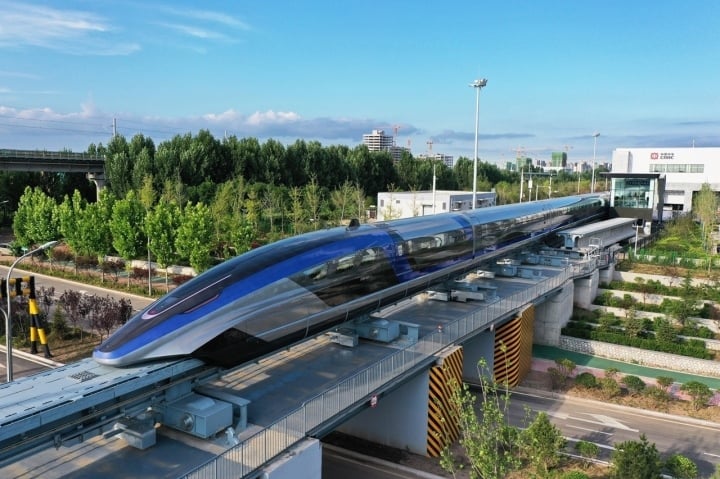
Shanghai maglev train. (Photo: Xinhua )
Shanghai Maglev Train. It is the world's fastest passenger train and the only one in the world to use magnetic levitation technology instead of wheels running on steel rails. The line connects Shanghai Pudong Airport with Longyang Station in the city center, reaching a top speed of 460 km/h, covering the 30 km journey in 7 minutes and 30 seconds.
Based on German technology, the train cars move along the elevated railway with extremely strong magnets, providing a smooth feeling for passengers. Using the experience after more than 10 years of operation, China has now developed its own maglev train technology with speeds of up to 600 km/h and has ambitions to develop a maglev rail network across the country, including the Hangzhou - Shanghai line.
CR400 Renaissance Train
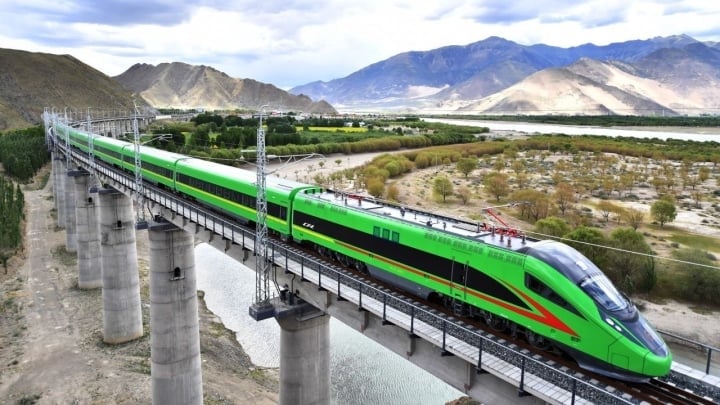
CR400 Renaissance ship. (Photo: CNN)
In addition to the world’s longest high-speed rail network, China now has the fastest scheduled trains on the planet. The CR400 Fuxing train operates commercially at a top speed of 350 km/h but can reach 420 km/h in testing. The Fuxing train is a development of an older generation of high-speed trains based on technology imported from Europe and Japan.
The 16-car train has a maximum capacity of 1,200 passengers and integrates many features such as on-site entertainment equipment, smart glass door screens, wireless charging, "smart cabins", and even trains designed to operate in extreme weather and operate automatically.
The fastest CR400 trips are being deployed on the main routes of Beijing - Shanghai - Hong Kong and Beijing - Harbin.
ICE
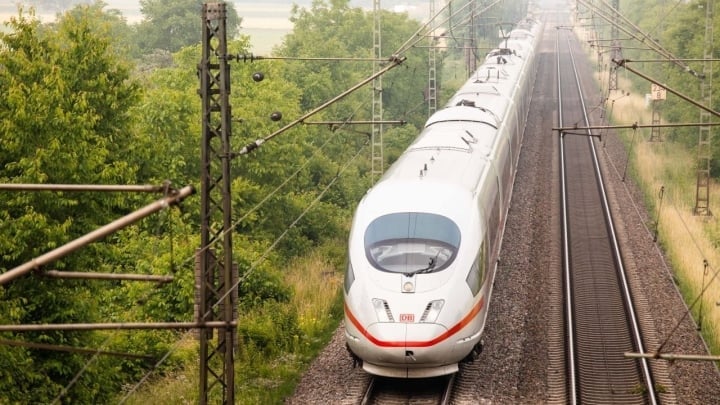
ICE (Inner City Express Train). (Photo: CNN )
ICE (Inner City Express), is a world-famous German brand, consisting of a group of high-speed trains deployed on many routes.
ICE3, also known as White Worm, is the fastest train line with a speed of 330 km/h, operating since 1999. The train was built to operate on the 180 km long Cologne - Frankfurt high-speed line, shortening travel time between the two cities from 2.5 hours to 62 minutes in 2002.
The train's normal operating speed is 300 km/h, but the ICE3 can accelerate to 330 km/h when running late. The maximum speed reached 228 km/h during testing. The key to operating the ICE3 is the 16 electric motors installed in the entire 8-car train, with a capacity of 11,000 horsepower.
The ICE3 fleet operates across Germany and on several international routes, connecting major German cities with Paris, Amsterdam and Brussels. The design is also used as the basis for Siemens' Velaro high-speed trains, which are being sold to Spain, Russia, Turkey, China and Eurostar for second-generation international freight trains.
TGV train
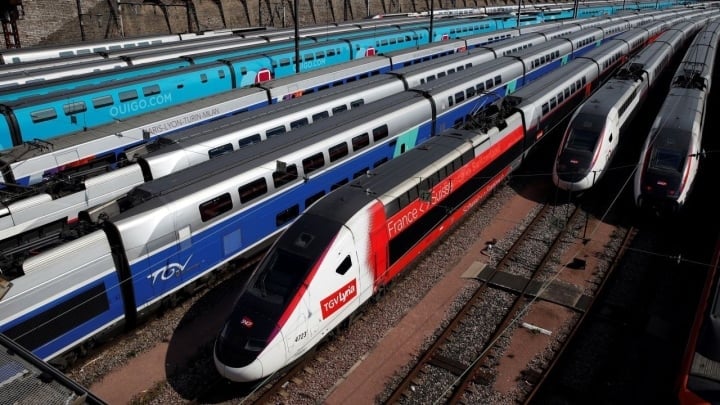
French TGV train. (Photo: CNN )
France has long been famous for its high-speed trains reaching speeds of up to 574.8 km/h, established since 2007. With a speed of 15m/s, nearly double the normal scheduled operating speed, France's TGV rail service is recognized worldwide as a pioneer in the field of high-speed rail.
The French railway industry has gradually surpassed the speed limit of normal trains since World War II, breaking the record in 1955 of 331 km/h, in 1981 it was 380 km/h, in 1990 it was 515.3 km/h.
Today, high-speed trains connect Paris with Lyon, Marseille, Bordeaux, Nantes, Strasbourg, Lille, Brussels and London, with trains travelling at up to 320 km/h. Over the past 40 years, the rail network has expanded, with new generations of high-speed trains being launched.
The iconic orange TGV trains of the 1980s have given way to advanced, high-capacity Duplex trains operating in neighboring countries such as Germany, Switzerland and Spain. The TGV-M, a double-decker train, is currently being tested and is expected to be operational from 2024.
France has also successfully exported its high-speed rail technology around the world. TGV technology has been sold to Spain, South Korea, Taiwan, Morocco, Italy and the United States over the past 30 years.
Shinkansen train
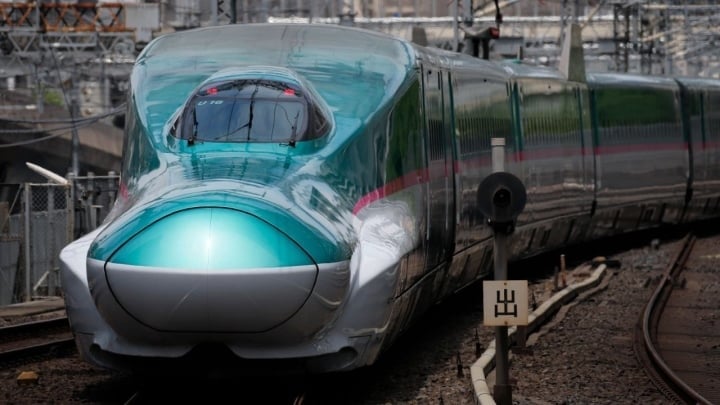
Shinkansen train. (Photo: CNN )
Japan introduced the new concept of high-speed rail to the world in 1964 and continues to be a global leader, surpassing the limits of speed, capacity and safety on its Shinkansen lines.
Most Shinkansen trains operate at a maximum speed of 300 km/h, with the East Japan Railway E5 "Bullet Train" running at 320 km/h on the Tohoku Shinkansen line from northern Tokyo to Shin-Aomori.
Each train has 731 seats and 32 electric induction motors, with a total capacity of 12,900 horsepower. The train is made of lightweight aluminum alloy and uses an active suspension system that allows the train to pass curves at higher speeds.
The long bow, designed to reduce noise generated when passing through tunnels at high speed, was introduced in 2011 and by 2016 had been deployed on routes in northern Aomori, connecting to Honshu, Japan's main island, via the 54km Seikan Tunnel under the Tsugaru Strait.
Al-Boraq Ship
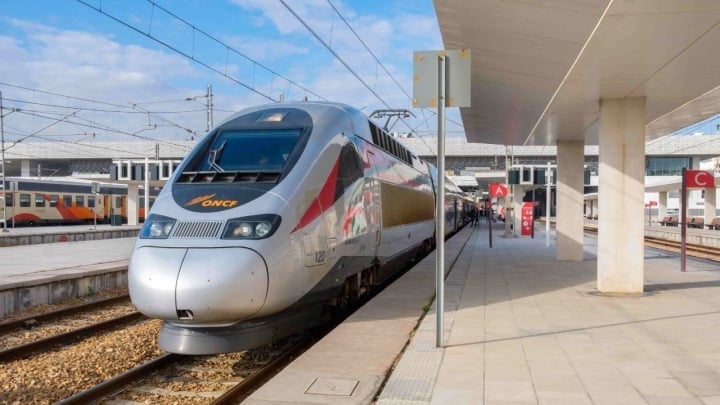
Al-Boraq ship. (Photo: CNN)
The first and so far only high-speed railway in Africa began operating in November 2018, connecting the port city of Tangier with Casablanca in Morocco.
The train, named Al-Boraq after the Prophet Muhammad's horse-bodied, winged mount, is part of the first phase of Morocco's 1,500-kilometer high-speed rail network.
French-built TGV Euroduplex trains will operate at speeds of up to 320 km/h on the 186 km route between Tangier and Kenitra. The $2 billion plan will also upgrade the existing 137 km line between Rabat and Casablanca to accommodate higher-speed trains, cutting the journey time from four hours and 45 minutes to two hours and 10 minutes.
Once the new Casablanca line is completed, the journey time will be reduced to 90 minutes. Al-Boraq also holds the speed record for a railway in Africa. During a 2017 test run before commercial operation, one of 12 Alstom-built trains reached a speed of nearly 357 km/h on the new line, more than double the speed of any other high-speed train currently operating across the African continent.
Ship S-103
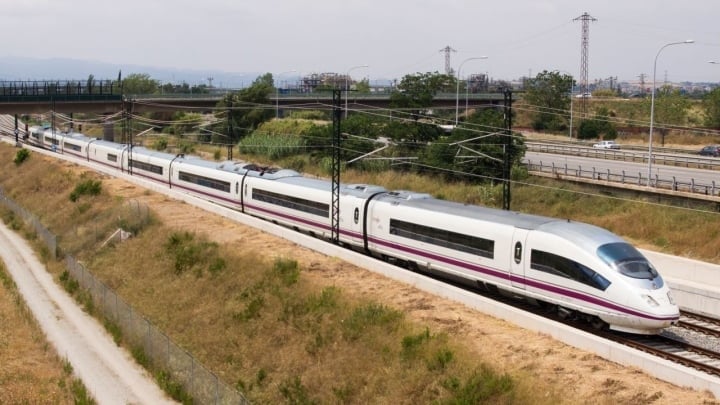
Ship S-103. (Photo: CNN)
Spain joined the high-speed rail bandwagon in 1992, using imported French TGV technology. Since then, it has developed its own high-speed rail system and built Europe’s longest dedicated rail network, stretching from Madrid to Seville, Malaga, Valencia, Galicia and Barcelona.
AVE, which stands for Spanish High Speed, which also means bird in Spanish, operates commercially at a maximum speed of 310 km/h. Spain's pride is the S-102 Tago and S-103 Velaro trains, which are similar to the German ICE3 but more powerful.
The S-103 has a maximum speed of 350 km/h, a capacity of 404 seats, connecting the two largest cities in Spain with the Talgo S-102 high-speed train system. In July 2006, an S-103 train set a speed record of 404 km/h, a world record at that time for a commercial passenger train.
For decades, Spain’s railways were notorious for being slow and late, but AVE has transformed them over the past 30 years, expanding its network to every corner of the country. The company is facing a challenge from two new rivals backed by the French and Italian national railways. Ouigo Espana offers a low-cost high-speed option using France’s TGV trains, while Iryo deploys Italy’s Red Arrow trains, aiming for a premium service.
Korea's high-speed rail
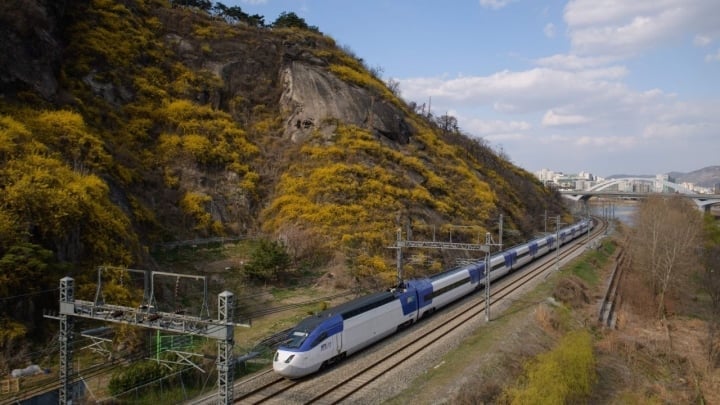
South Korea's high-speed rail system. (Photo: CNN )
Since 2004, South Korea has rapidly expanded its high-speed rail network, bypassing older routes in rugged terrain that slow travel times and are uncompetitive.
Starting with the Seoul-Busan line in 2004, KTX trains can operate at speeds of up to 330 km/h, despite the normal limit of 305 km/h. The first generation KTX-I, based on French TGV technology, reduced travel time on the Seoul-Busan line from more than four hours to two hours and 15 minutes.
South Korea, Japan, France and China are the four countries in the world that have developed railway trains capable of running at speeds of over 420 km/h. The new generation HEMU-430X train model reached a speed of 521.4 km/h in 2013, breaking the old Korean record of 352.4 km/h set by the second generation KTX HSR-350x train.
The latest train models use self-developed Korean technology, have pressure-sealed compartments, and are equipped with triple-layered glass to reduce noise and eliminate discomfort when entering tunnels.
With up to two departures per hour on major routes and trains of up to 20 cars, the KTX is a high-speed public transport system that carries hundreds of millions of passengers each year. The KTX also operates routes connecting Seoul with Gwangju, Mokpo and Yeosu in the south of the country, and Gangneung in the northeast, which will host the 2018 Pyeongchang Winter Olympics.
Red Arrow Ship
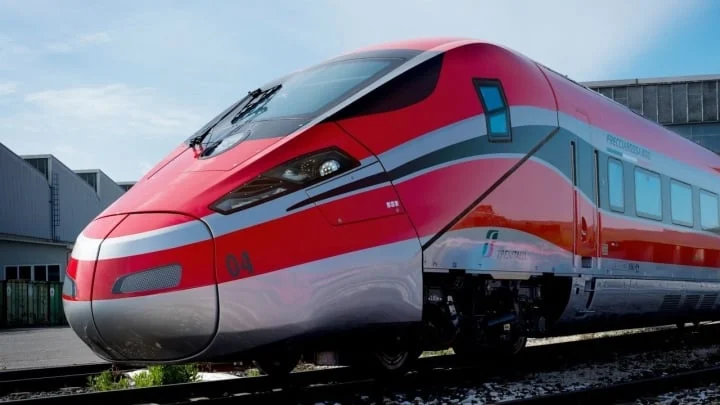
Red Arrow Ship. (Photo: CNN )
The Red Arrow train of the Italian national railway company has been operating since 2017 when its competitor launched a new product. The train has a maximum speed of 400 km/h, a capacity of 10,000 horsepower, and a maximum licensed passenger speed of 360 km/h.
The 200-meter-long train has 457 seats in four classes, from standard to premium. The highest class has only 10 reclining seats and on-site dining. Red Arrow services operate across Italy's T-shaped high-speed rail network, connecting Turin, Milan and Venice in the north with Bologna, Florence, Rome and Naples.
High-speed rail system in Saudi Arabia
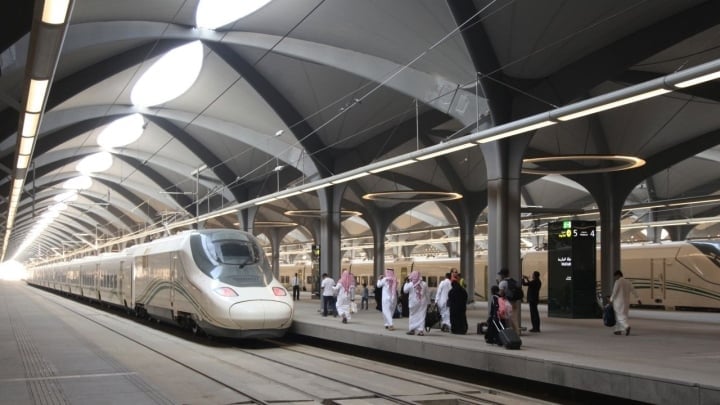
High-speed rail system in Saudi Arabia. (Photo: CNN )
Hot weather and sandstorms are not ideal operating conditions for high-speed trains, but Saudi Arabia's Haramain High-Speed Railway Company is still operating, connecting the holy cities of Mecca and Medina at speeds of 300 km/h.
The company uses 35 Spanish-made Talgo trains, adapted to the terrain and desert climate of up to 50 degrees Celsius. The trains take just two hours to transport passengers over a distance of 459 km.
Each train has 13 carriages, a capacity of 417 passengers, and a capacity of 60 million passengers per year. Since its launch in 2018, the railway has become a popular service for traveling between Medina and Mecca, a route that takes 10 hours by car.
HONG PHUC (Source: CNN)
Useful
Emotion
Creative
Unique
Wrath
Source
























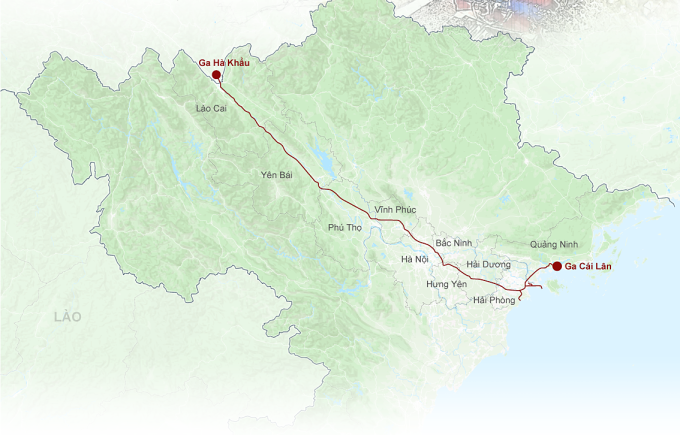
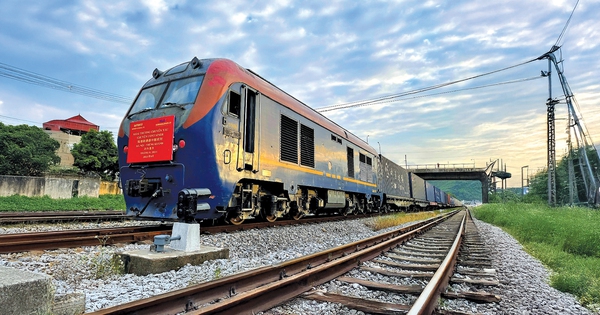


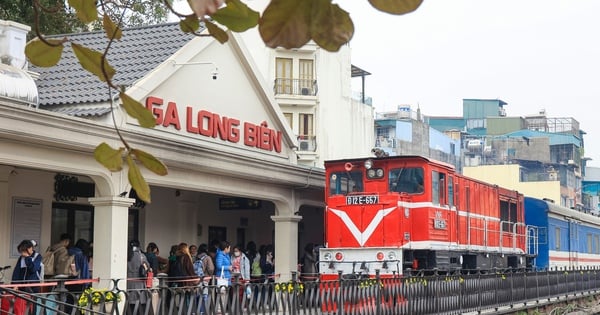
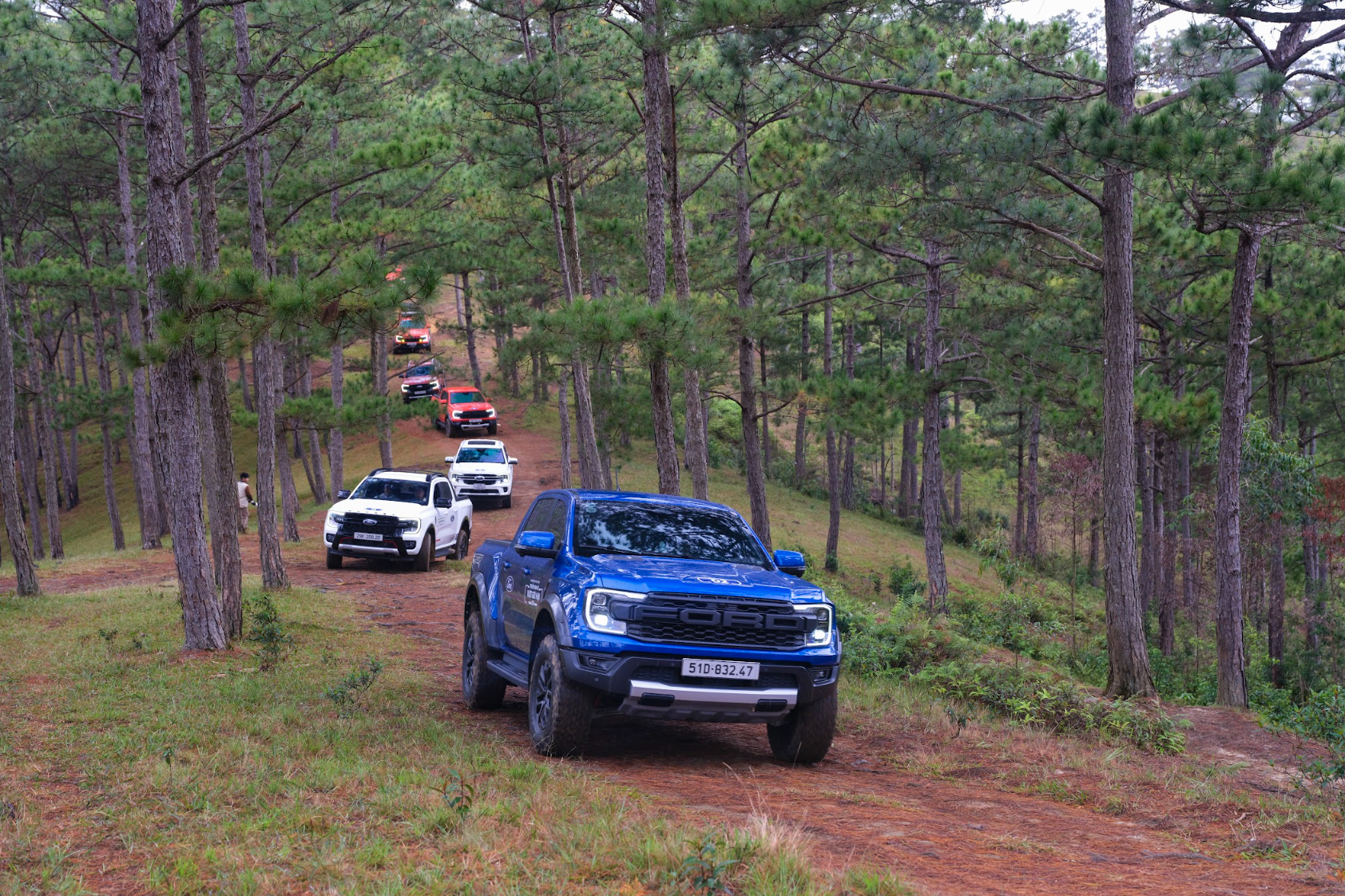

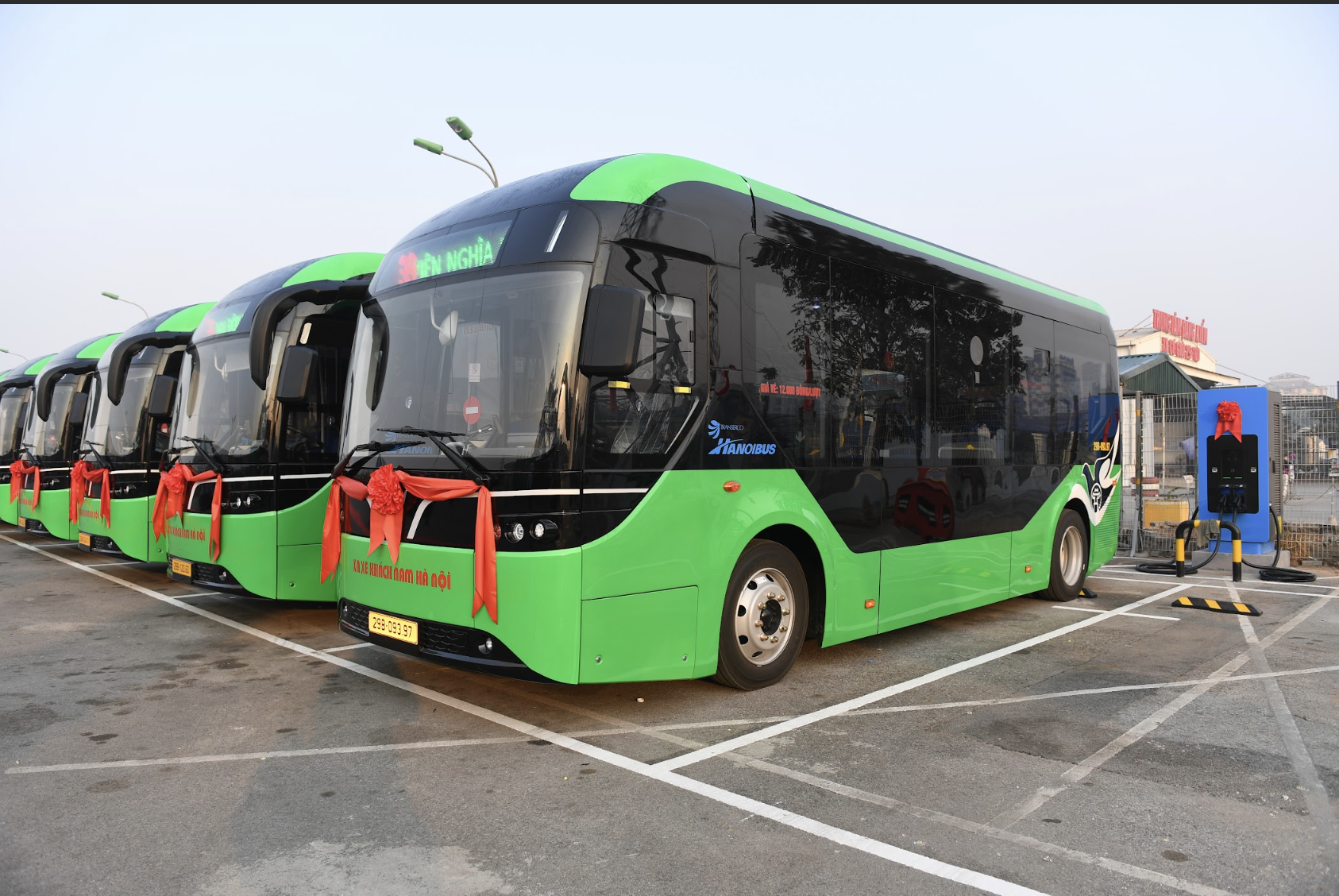
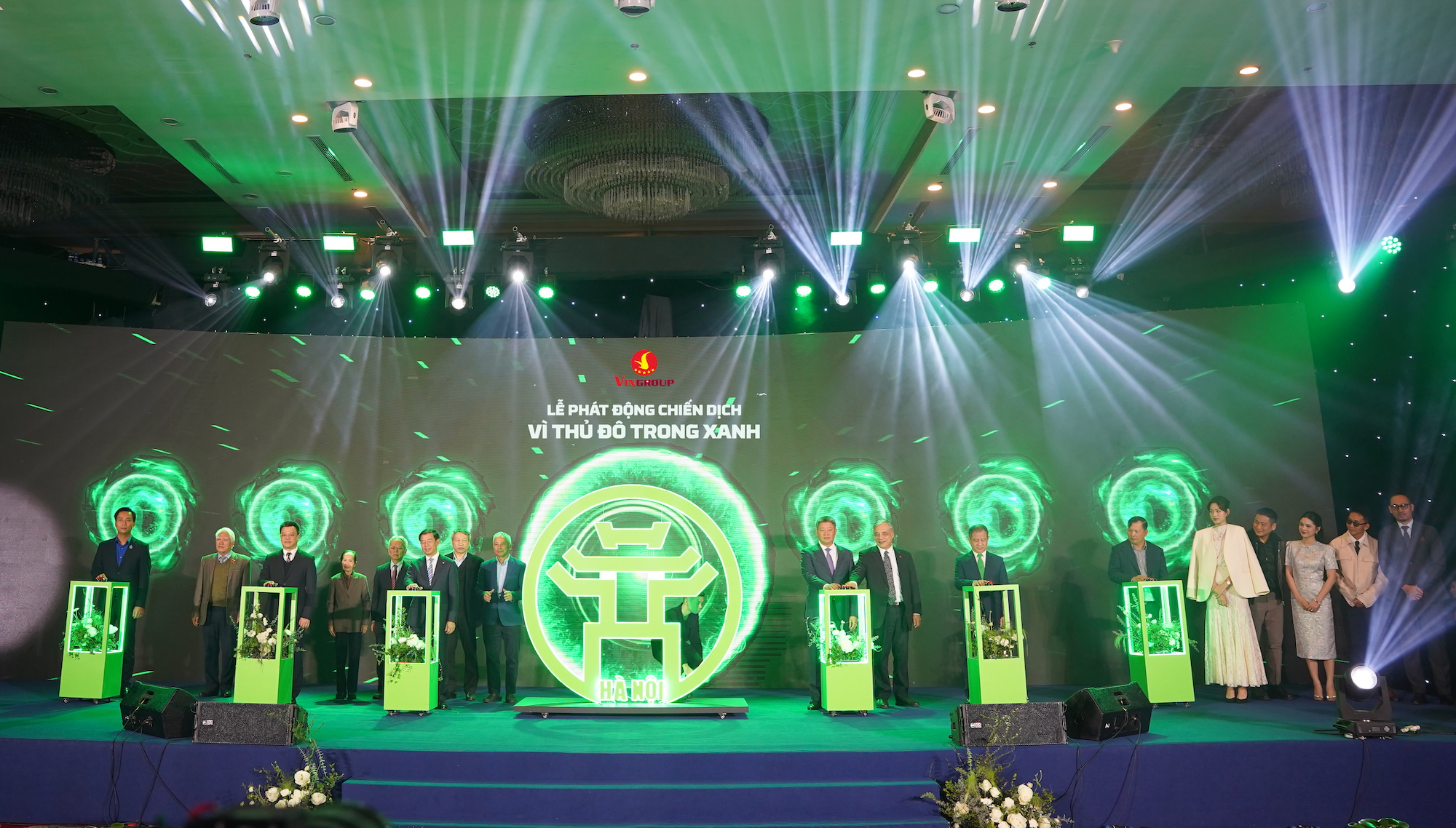

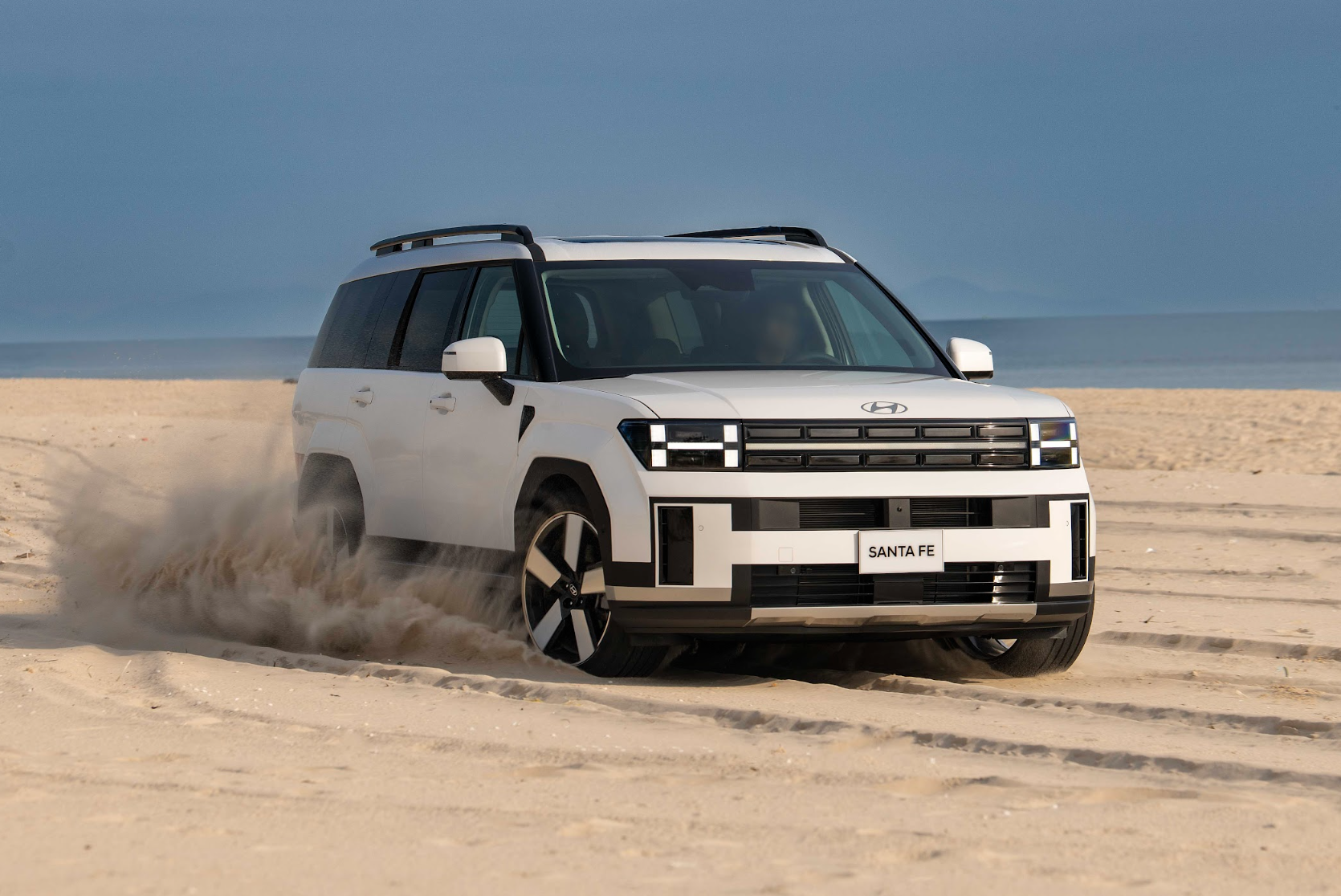
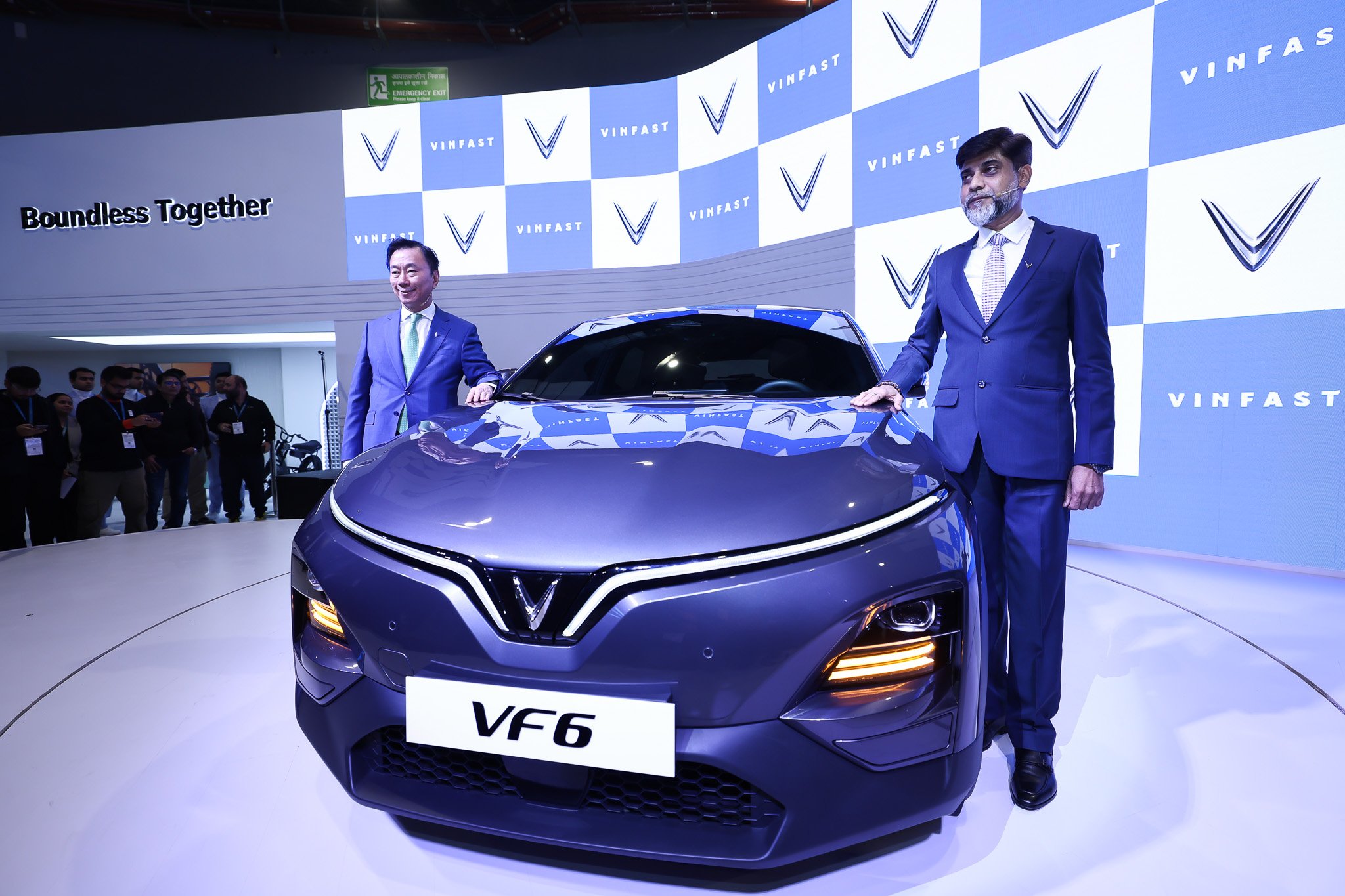






















Comment (0)